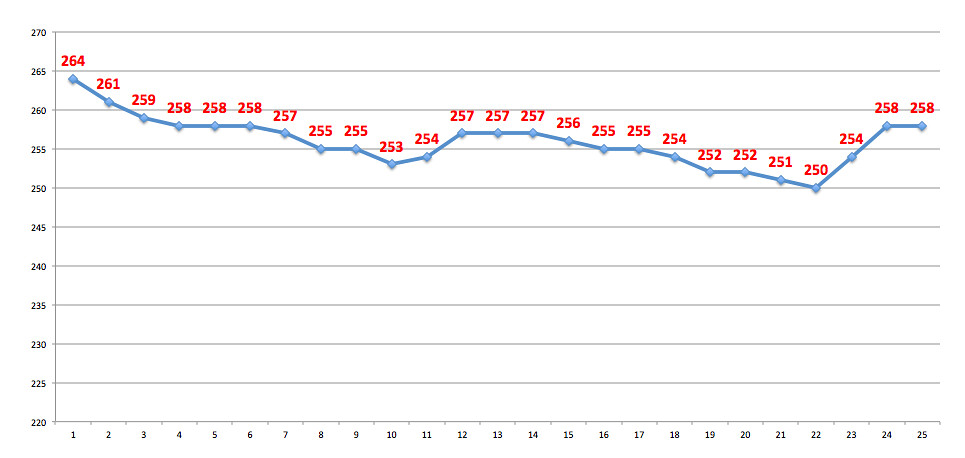That is what I said: ...Amber Lake is going to get double digit gains but M3/i5/i7s are all going to perform in the same range, just like Kabylake Y.
However, just like Kabylake-Y, Amberlake M3/i5/i7s are going to be the same. Differentiation is only peak clocks in extremely light load/bursty scenarios or ST. Which makes the only reason you buy i5/i7 over M3 being responsiveness.
NBC shows zero difference between the three. The i5 and the i7s might be slightly faster in the beginning, but the TDP constraints force all 3 to be the same. It's all for responsiveness.
Simply put, the Core chips are too much for 5-7W TDP range. They are really pushing it.
I’m not familiar with NBC testing but it is a synthetic load. How extreme is the load? Like I said, with my YES x 4 testing I could get the machine to go to 2.6 GHz immediately, and the i5 and i7 behave the same way. But YES x 4 isn't very representative of real world loads.
The graph below is our testing on KBL MacBooks, using repeated Cinebench R15 CPU benches. As soon as the test ended, it would be started again, maybe with a 1 sec delay. Wood is on a wood table (insulator) and granite is on a granite counter (better conductor). The Cinebench scores are shown in the graph lines. The X axis is the run number. After about run 10-12 runs we’re already past the 30 minute mark. Regardless, you can see there is still at least some difference after half an hour of sustained Cinebench R15 load.
For the granite run I actually ran it ran it much longer, but during run 11 I moved the computer over several inches, just to make the positioning on the counter less awkward.
Notice how the score improved when I moved it, presumably because that part of the counter hadn't been heated up yet by the computer. And then in run 23 I moved it on purpose to confirm that hypothesis.





